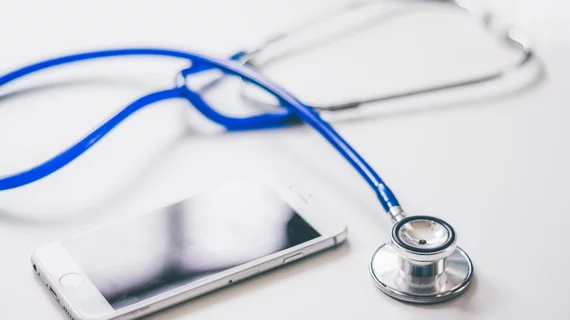AI phone app IDs implantable cardiac devices on chest x-rays
Researchers out of the U.S. have created an AI smartphone app to automatically identify cardiac devices—such as pacemakers—on chest x-rays, describing their process in JACC: Electrophysiology.
Currently, when clinicians need to identify cardiac implanted electrical devices (CIEDs) they must manually analyze chest radiographs, Michael Weinreich, MD, MPH, of Montefiore Medical Center in New York, and colleagues wrote in the study.
“However, this is time consuming and difficult, requiring subjective provider interpretation,” the researchers added.
In their study, Weinreich and colleagues developed their smartphone-enabled convolutional neural network model based on a platform already created by UK researchers. They took anteroposterior and posteroanterior chest x-rays from patients with pacemakers (47%) and cardioverter-defibrillators (53%) implanted between 2016 and 2018 at a single institution. The more than 1,500 images were deidentified and coded as one of four major device manufacturers: Medtronic, Abbott/St. Jude Medical, Boston Scientific or Biotronik.
After the researchers used a cell phone to incorporate screenshots and artifacts into the images, they augmented the data and loaded 3,008 images for analysis. Broken down, 2,106 images were in the training dataset, 602 images were in the validation dataset to fine-tune the model, and 300 images were in the final testing dataset.
When the AI platform was applied to the testing group, it achieved receiver operating characteristic curves greater than 0.95. It accurately identified all of the Abbott/St. Jude Medical images, 95% of Boston Scientific images, 94% of Medtronic images and 91% of Biotronik images.
And in the validation set, the AI produced a 95% sensitivity and 98% specificity.
While the study was limited by a small training sample size and lack of external validation, the AI phone application, the authors noted, takes the “pragmatic next step” to the frontlines of care.
“Rather than the conventional ‘bench-to-bedside’ approach of translational research, we demonstrated the feasibility of ‘big data-to-bedside’ endeavors,” Weinreich and colleagues wrote. “This research has the potential to facilitate device identification in urgent scenarios in medical settings with limited resources.”

